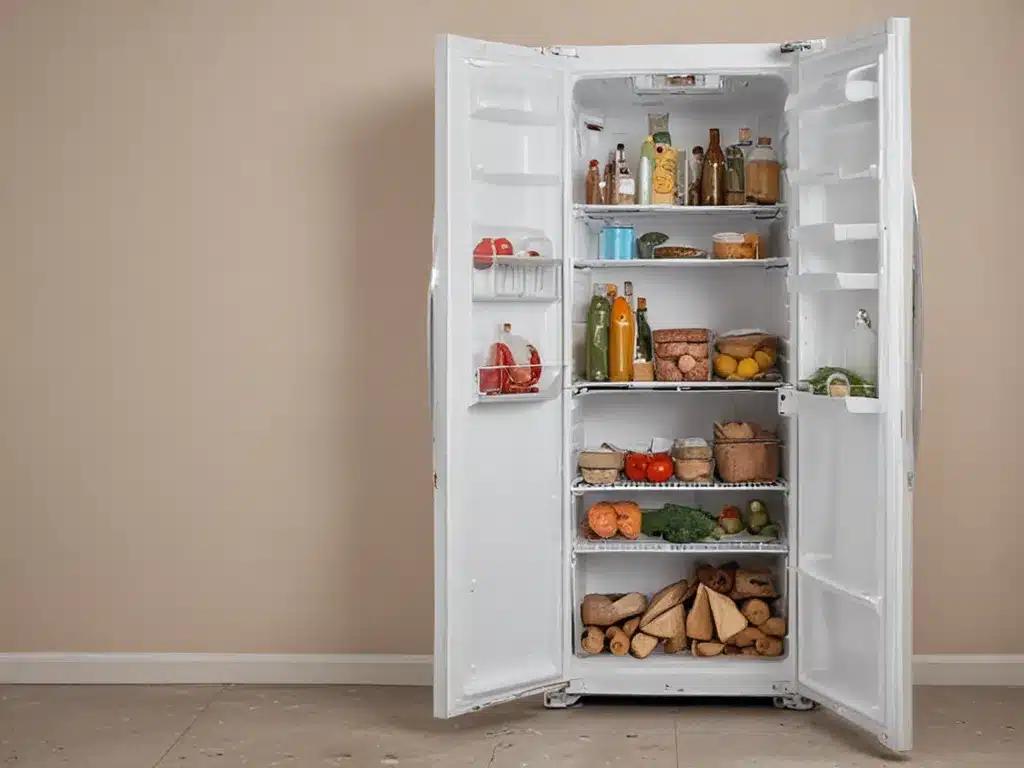Introduction
Cleaning out an old fridge or freezer that has been sitting unused can be an unpleasant task. Over time, rotting food and mold can accumulate, making the appliance a breeding ground for bacteria and a potential health hazard. However, with proper preparation and care, you can safely remove the rotten remnants and reclaim your space. I recently went through this process myself, and discovered some best practices that made the job much more manageable.
Preparing for the Task
Before tackling an old fridge or freezer full of rotten food, take a few preliminary steps:
-
Protect yourself. Wear gloves, goggles, a mask, and old clothes to avoid direct contact with mold and bacteria.
-
Ventilate the area. Opening windows or turning on fans will help dissipate odors and avoid contamination.
-
Gather supplies. Have on hand trash bags, cleaning solutions, scrub brushes, baking soda, and anything else that will help you swiftly and safely clear out the appliance.
-
Disconnect the power. Unplug refrigerators and freezers so they do not turn on unexpectedly during cleaning.
Removing the Debris
With protective gear on and ventilation flowing, it’s time to start clearing out the rotten contents:
-
Remove shelves and drawers. Take out removable parts to simplify access to all areas. Set aside those that can be cleaned for later use.
-
Scrape out debris. Use a spatula, spoon, or other tool to scoop out solid remnants into trash bags. Avoid direct handling of rotting food as much as possible.
-
Discard porous items. Sponges, plastic containers, cardboard, and anything that has absorbed odors should be thrown away.
-
Work quickly. The faster you can remove the debris, the less chance there is of contamination or odor spreading. Don’t leave the door open any longer than necessary.
-
Seal and dispose of bags. Seal trash bags containing debris tightly to contain odors. Dispose of them promptly according to local waste removal guidelines.
Sanitizing the Interior
Once all debris has been removed, thoroughly clean and sanitize the interior:
-
Combine warm water with baking soda, hydrogen peroxide, or other sanitizing agents. This will help neutralize odors and kill bacteria.
-
Use a sponge or scrub brush dipped in the sanitizing solution to wipe down all interior surfaces. Pay particular attention to door gaskets and crevices where grime collects.
-
For stubborn mold stains, try scrubbing with a baking soda paste or undiluted vinegar. The acidic vinegar will help break down organic growths.
-
A diluted bleach solution is also an effective sanitizer for the interior. Take care not to mix bleach with vinegar or other chemicals.
-
Allow the appliance to air dry completely before replacing shelves or drawers. Circulating air will help remove any remaining moisture and odors.
Preventing Future Messes
To avoid ending up with another neglected fridge or freezer to clean out down the road:
-
Keep appliances clean. Wipe spills promptly, and wash removable parts like shelves regularly.
-
Don’t allow food to expire. Rotate items with older stock up front, and check dates to use food while still fresh.
-
Defrost freezers periodically to avoid buildup of ice and debris. Follow the manufacturer’s suggested schedule.
-
Unplug and clean out unused appliances. Don’t just let them sit accumulating grime and rot. Either use them or responsibly recycle them.
-
Fix leaks and mechanical issues promptly. Drips and broken seals can accelerate the growth of mold and odors.
Putting in the elbow grease for a thorough cleaning is worthwhile to reclaim usable space and appliances. By taking proper health precautions and following effective cleaning methods, you can clear out old fridges and freezers safely and get them back into service. Just be sure to stay on top of maintenance going forward! No one wants to deal with rotten remnants more than absolutely necessary.







